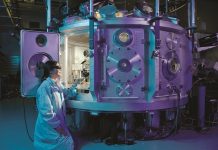August 2008 - Five years ago, ophthalmologists started using steroid injections as a new way of treating diabetics with swelling in their eyes. Now, research shows that the traditional treatment for this disorder is still more effective, according to results in the online edition of the journal Ophthalmology.
Despite the recent trend to use corticosteroid injections, the NIH-funded study proves that the most effective treatment to preserve eyesight in diabetic patients with diabetic macular edema (DME) is with laser therapy.
"Many of the investigators, including myself, were surprised by the results," said Dr. David Brown, ophthalmologist and retina specialist at The Methodist Hospital in Houston and local principal investigator. "We�re continually researching new treatments, but sometimes the tried and true methods are still the best course. These findings substantiate the importance of laser treatment in the management of diabetic macular edema."
The multi-center study, funded by the NIH's National Eye Institute and conducted through the Diabetic Retinopathy Clinical Research Network, demonstrates that laser therapy is not only more effective than corticosteroids in the long term treatment of DME, but also has far fewer side effects. A total of 693 patients with DME participated in the randomized study at 88 sites across the United States.
Between 40 and 45 percent of the 18 million Americans diagnosed with diabetes have vision problems, such as diabetic macular edema. This condition occurs when the center part of the eye's retina, or macula, swells, possibly leading to blindness.
Continue Reading Below ↓↓↓
Several years ago, early reports of success in treating DME with injections of a corticosteroid led to the rise in popularity of this drug therapy. This NEI-funded study is the first to compare the long-term benefits of both treatments and evaluate their potential side effects.
This study will also appear in the September print issue of Ophthalmology.
About the study
Following randomized treatment (corticosteroid or laser treatment), study patients were tested to determine whether the procedure had prevented substantial vision loss. Investigators defined substantial vision loss as reading at least two fewer lines on a standard eye chart two years after enrolling in the study.
In the corticosteroid-treated group, 28 percent experienced substantial vision loss as compared to 19 percent in the laser-treated group. In addition, about one-third of the eyes treated with laser therapy showed substantial improvement in vision.
The corticosteroid-treated group also experienced more side effects, such as the need for cataract surgery and increased eye pressure, which may lead to glaucoma.
Source: Methodist Hospital, Houston









